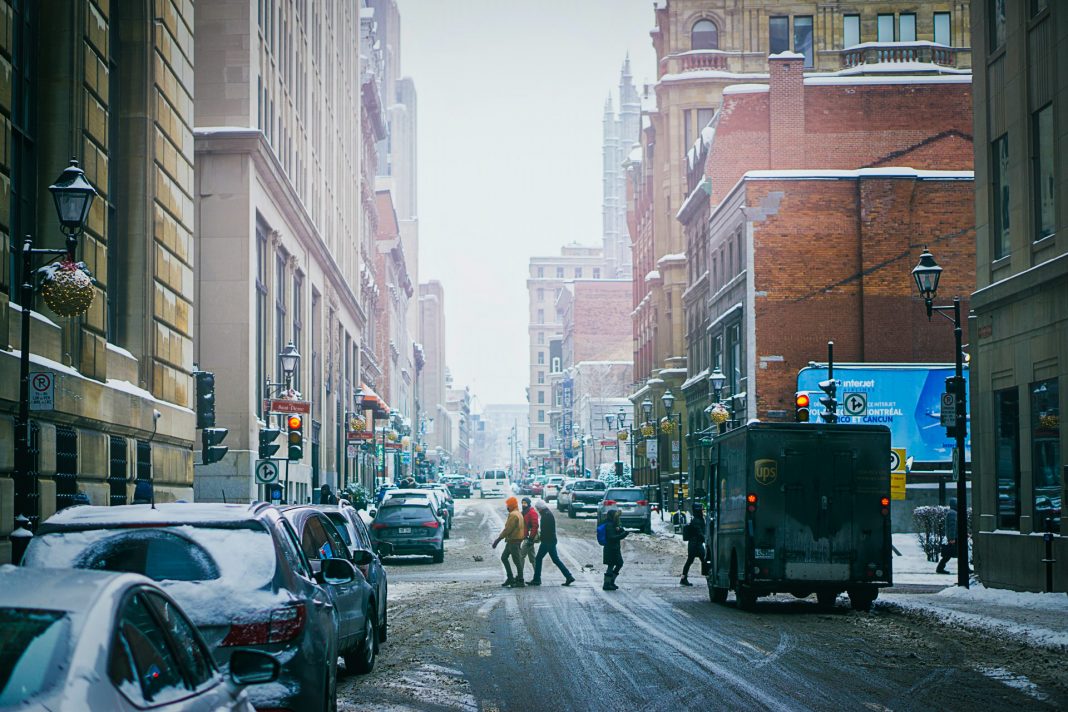It’s a simple equation: A growing number of people living in cities plus a growing e-commerce sector plus a growing parcel volume equals traffic collapse, right? Well, maybe. But maybe not! We show how cities can outsmart this linear logic and avoid traffic collapse by taking the right actions. First, let’s face cities’ logistical challenges.
Growing Cities – Growing Parcel Volumes
Cities are growing and so are the volumes of parcels being shipped on our streets. Some consider these vans and trucks a plague; others regard them as a necessary evil. Either way, delivery traffic has evidently increased over the last years and, with a few exceptions, cities are struggling to deal with these enormous volumes.
For the first time in history, global parcel volume surpassed the 100-billion-mark in 2019. While the corona-outbreak did slow down our daily routines, this isn’t true for the logistics sector or more precisely, the e-commerce sector. Latest numbers released by the German Parcel and Express Association (BIEK) indicate a staggering increase in deliveries. During the first half of 2020, country-wide deliveries even grew by 7.4 %, with the greatest increase being registered in the B2C segment. This equals an additional 800.000 deliveries per day. To be sure, Germany isn’t the only country to report steady growth rates: your country is likely to show similar numbers.

Why Cities Are Struggling With Increased Volumes of Goods
City logistics describes the moving of goods in cities and more generally encompasses any service that contributes to managing the movement of these goods in a more efficient way. Another frequently used term is “last mile delivery”. The last mile here refers to the final step in the delivery process, typically from a distribution centre or warehouse to the recipient.
What makes this final leg stand out in the long delivery (or supply) chain is its visibility. Few of us witness B2B freight into the warehouses on cities’ peripheries, but each and every one of us has been a recipient. To many, these vans are an eyesore rather than an asset. ‘Last mile’ is also what we have in mind when urban freight is debated. We can guess why: customer fragmentation naturally makes this part of a parcel’s journey inefficient and costly.
But what are cities and logistics companies currently struggling with when it comes to last mile deliveries?
1. Congestion and parking
Especially during peak hours, time being stuck in traffic is time is lost for deliveries, which ultimately results in economic losses for the delivery companies and even more pressure on the drivers – a vicious circle.
Finding parking spots can cost valuable minutes, too. While cities usually provide parking zones designated to delivery traffic, they may not be available when the van actually arrives, nor are they necessarily in walking distance to the recipient. As a result, second-row or sidewalk parking are common.
2. Emissions
Traffic equals emissions, notably CO2, NOx, small particulate matter (PM 2.5) and noise emissions.
CO2 – In 2018, global transport amounted to 8 billion tonnes of carbon dioxide, which equals 24 % of total CO2 emissions from energy. Within the transport sector, passenger road transport made up the largest share with approximately 45 %, followed closely by freight transport (vans and trucks) which amounted to almost 30 %. On a city-level, reliable data on freight-related emissions is hard to find. On average the moving of goods amounts to 20-30 % of traffic within cities.
NOx does get a lot of attention, too, but small particulate matter (PM 2.5) is thought to be the actual killer: the culprit being tire wear, which we happen to inhale. There’s no difference between fossil fuel and electric vans.
To be sure, these are external costs which come to haunt us indirectly that is they are typically not visible on the bill. The costs are borne by society at large.
3. Regulations
In an effort to meet national emission reduction targets regulatory measures include the implementation of low- or zero-emission zones, limited access times, electronic access control, or road-pricing schemes. It’s easy to see why regulations are the preferred tool to curb the delivery frenzy. And still, there’s no linear relationship between regulations and efficiency. Also, a hotchpotch of regulations, as we see them in some cities, doesn’t help anyone.
4. Customer expectations
Who doesn’t want their parcel as fast as possible, during a time slot they chose and, tracked in real time? The failure rate for first attempt deliveries ranges from 10-40 % (depending on the study) and is much higher in B2C than in the B2B. Individualized delivery and ‘free returns’ entails costs no one wants to, but someone has to bear.
5. Competition
Depending on the customer and the kind of shipment, different operators are involved in the supply chain: third-party logistics (3PL) providers managing a company’s warehousing, the distribution and transportation of freight; freight carriers such as trucking companies, rail services, ocean and air freight carriers; courier, express and parcel companies (CEP) and national postal services. Recently, online retailers but also companies like Uber have entered the logistics market. Competition doesn’t equal efficiency. In fact, the key to making last mile more efficient may lie in collaboration.
The Challenge
- First, one major step towards increased efficiency is the bundling of goods. The greatest obstacle currently being how different players in the logistics field can successfully collaborate without jeopardizing free competition.
- Second, if we want to green last mile delivery and accelerate a shift towards zero-emission vehicle fleets, cities and governments have to take responsibility and become facilitators of this transition process. Currently, cities often lack regulatory measures and a sound surveillance that would effectively drive companies (both retail and logistics) towards greening their delivery processes. Thus, clear responsibilities and keen actions are key.
Tackling both of these issues will be vital for creating more liveable, healthier and happier cities. That being said, I think we can all agree that it is high time to do something about it. Let us jump right in and find out how to get started.


